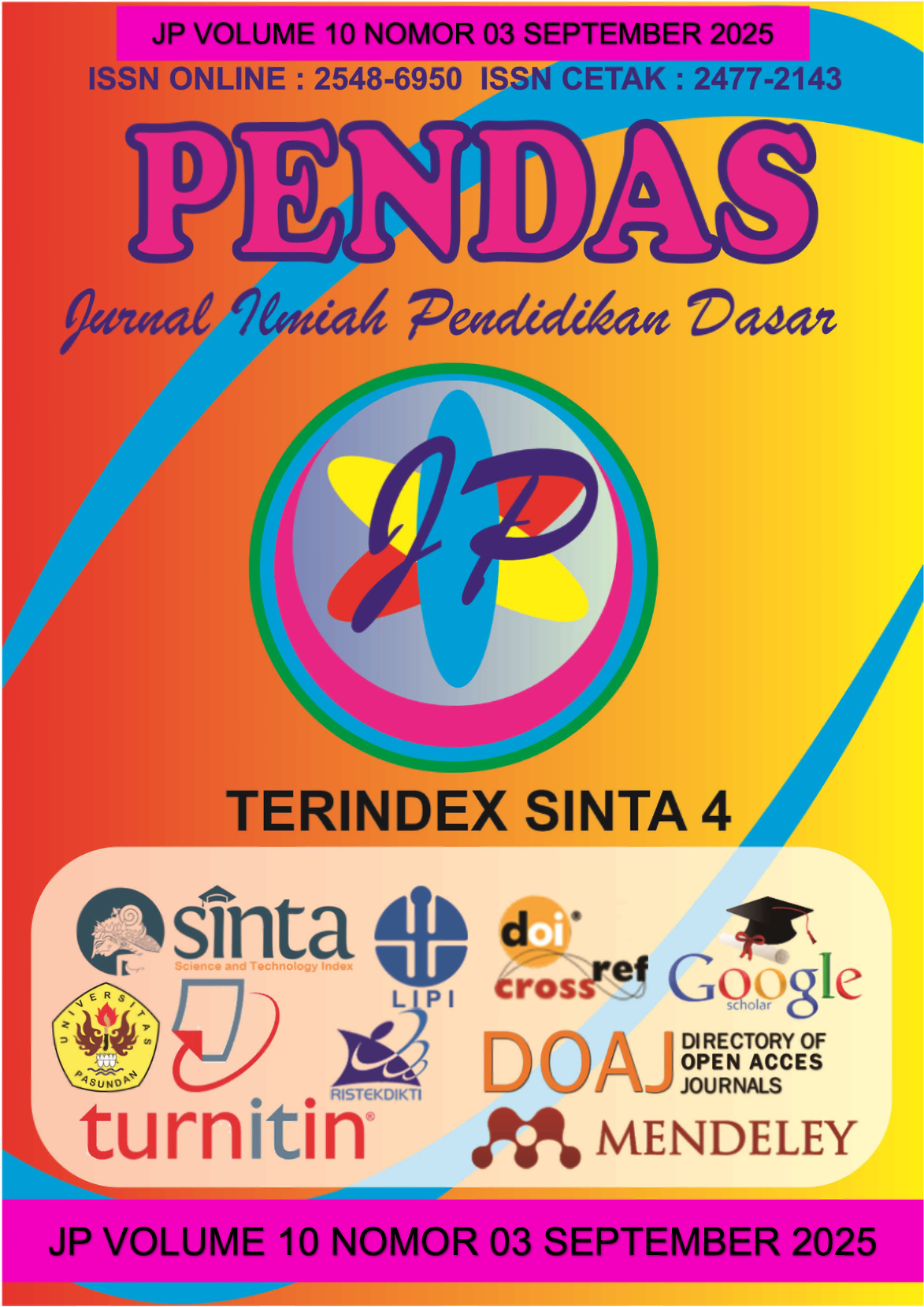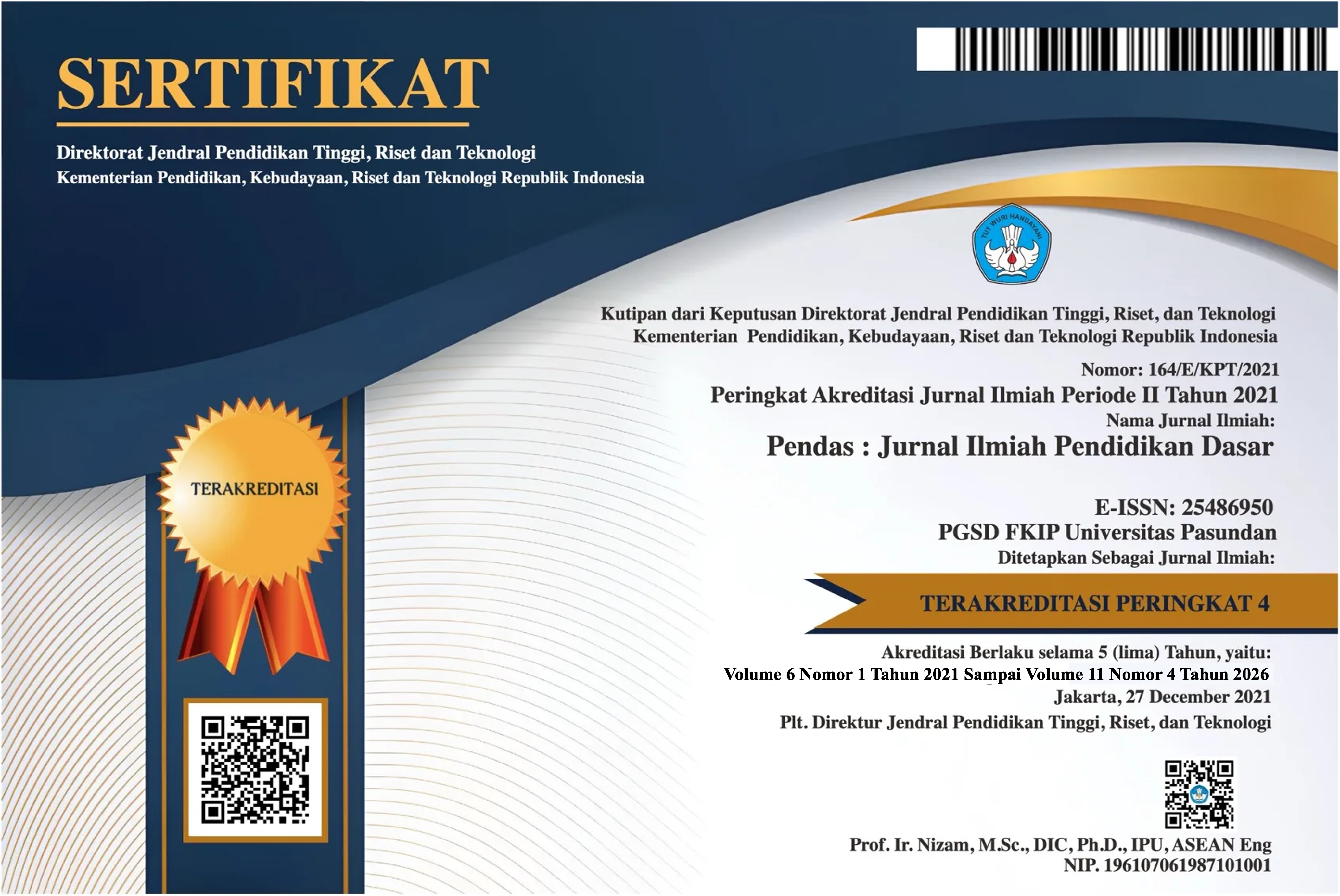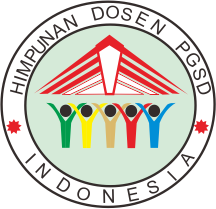ANALISIS MULTIKRITERIA DAN REGRESI LOGISTIK TERHADAP KERAWANAN BANJIR DI KECAMATAN KOTO XI TARUSAN, KABUPATEN PESISIR SELATAN
DOI:
https://doi.org/10.23969/jp.v10i03.30869Keywords:
Kerawanan Banjir, Analytic Hierarchy Process (AHP), Regresi Logistik Biner, Analisis Bivariat.Abstract
The objectives of this research are: (1) Mapping flood vulnerability in Koto XI Tarusan Sub-district, Pesisir Selatan Regency. (2) To determine the most influential factors in determining the level of flood vulnerability in Koto XI Tarusan Sub-district, Pesisir Selatan Regency. This type of research is quantitative research with descriptive, and inferential approaches. Using a combined method consisting of three stages of analysis. Firstly, Analytic Hierarchy Process (AHP) was used to determine the priority importance of each parameter based on expert judgement. Second, Binary Logistic Regression was applied to build the most stable and significant statistical prediction model. Thirdly, bivariate analyses (Chi-Square Test and Independent Sample T-Test) were applied to test individual relationships between variables. The six main parameters were rainfall, elevation, slope, soil type, distance from river and land cover. Validation of the regression model was conducted with a train-test data split of 80%-20%. The results showed that (1) The results of the AHP method flood vulnerability mapping are classified into three levels of vulnerability, namely low with an area of 22,584.94 hectares (51%), medium with an area of 18,704.34 hectares (42%), and high with an area of 2,987.69 hectares (7%). Mapping binary logistic regression method classified into three levels of vulnerability, namely low with an area of 31,054.538 hectares (70%), moderate with an area of 2,644.558 hectares (6%), and high with an area of 10,649, 199 hectares (24%), concentrated along the alluvial plain of Tarusan watershed (2) Rainfall (priority, 0.38) and Elevation (priority, 0.23) are the most influential factors according to AHP. Binary logistic regression model of significant variables showed Distance from River (p = 0.002) and Slope (p = 0.015) as the best model with 100% validation accuracy. Bivariate analysis proved that the factors of soil type, land cover and elevation had very strong individual relationships (p < 0.05) with flood occurrence. In conclusion, triggering factors (hydrometeorology) and physical vulnerability (geomorphology and land cover) jointly determine the level of flood vulnerability.
Downloads
References
Azizah, Mir'atul, Adi Subiyanto, Sugeng Triutomo, and Dewi Wahyuni. "Pengaruh perubahan iklim terhadap bencana hidrometeorologi di kecamatan cisarua-kabupaten bogor." PENDIPA Journal of Science Education 6, no. 2 (2022): 541-546.
Darmawan, Y., Mashuri, I., Jumansa, M. A., Aslam, F. M., & Azzahra, A. (2023). Analisis daerah rawan banjir dengan metode composite mapping analysis (Cma) di kota padang. Jurnal Ilmiah Geomatika, 29(2), 89-97.
Heryana, A. (2020). Analisis data penelitian kuantitatif. Penerbit Erlangga, Jakarta, June, 1-11.
Lasaiba, M. (2023). Analisis Multikriteria Berbasis Sistem Informasi Geografis (SIG) terhadap Bahaya dan Resiko Banjir di Kecamatan Sirimau Kota Ambon. Jurnal Geosains Dan Remote Sensing, 4(2), 77-90.0
M. Azizah, A. Subiyanto, S. Triutomo, & D. Wahyuni, Pengaruh Perubahan Iklim Terhadap Bencana Hidrometeorologi di Kecamatan Cisarua - Kabupaten Bogor, PENDIPA Journal of Science Education, vol. 6, no. 2, pp. 541–546, Jun. 2022, doi: 10.33369/pendipa.6.2.541-546.
Madani, I., Bachri, S., & Aldiansyah, S. (2022). Pemetaan Kerawanan Banjir di Daerah Aliran Sungai (DAS) Bendo Kabupaten Banyuwangi Berbasis Sistem Informasi Geografis. Jurnal Geosaintek, 8(2), 192. https://doi.org/10.12962/j25023659.v8i2.11907
Mulia, F. A., & Handayani, W. (2024). Pemanfaatan Sistem Informasi Geografis Untuk Pemetaan Kerawanan Bencana Banjir Kota Padang Tahun 2011-2022. GEOID, 19(2), 192-201.
Putra, P., & Maulana, I. (2025, Januari 7). 889 Unit Rumah Terendam Banjir Pesisir Selatan Sumbar. Kompas. Diakses pada 07 Februari 2025, dari regional.kompas.com
Ramadhan, D. R., & Chernovita, H. P. (2021). Analisis tingkat kerawanan banjir di Kabupaten Semarang menggunakan overlay dan scoring memanfaatkan SIG. JAGAT (Jurnal Geografi Aplikasi Dan Teknologi), 5(1), 1-10.
Ramadhani, D., Hariyanto, T., & Nurwatik, N. (2022). Penerapan Metode Analytical Hierarchy Process (AHP) dalam Pemetaan Potensi Banjir Berbasis Sistem Informasi Geografis (Studi Kasus: Kota Malang, Jawa Timur). Geoid, 17(1), 72-80.
Ramadhani, D., Hariyanto, T., & Nurwatik, N. (2022). Penerapan Metode Analytical Hierarchy Process (AHP) dalam Pemetaan Potensi Banjir Berbasis Sistem Informasi Geografis (Studi Kasus: Kota Malang, Jawa Timur). Geoid, 17(1), 72-80.
Roflin, Eddy., Freza, R., Ensiwi, M., Pariyana., & Iche, A.L. (2023). Regresi Logistik Biner dan Multinominal. Jawa Tengah : PT Nasya Expanding Management.
Saaty, t. L. (2008). Decision Making with The Analytic Hierarchy Process. International Journal of Services Sciences, 1, 83–98.
Saddam, M. A., Dewantara, E. K., & Solichin, A. (2023). Sentiment Analysis of Flood Disaster Management in Jakarta on Twitter Using Support Vector Machines. Sinkron, 8(1), 470 – 479.
Syarief, A., Triyatno, T., Purwaningsih, E., & Ramadhan, R. (2021). Peningkatan Kapasitas Perangkat Nagari dalam Pemanfaatan Teknologi Informasi Geospasial untuk Pemetaan Wilayah Rawan Banjir di Nagari Binjai Tapan Kabupaten Pesisir Selatan. Abdi: Jurnal Pengabdian dan Pemberdayaan Masyarakat, 3(2), 96-101.
Ullah, Niamat, Aqil Tariq, Said Qasim, Sanaullah Panezai, Md Galal Uddin, M. Abdullah-Al-Wadud, and Sajid Ullah. "Geospatial analysis and AHP for flood risk mapping in Quetta, Pakistan: a tool for disaster management and mitigation." Applied Water Science 14, no. 11 (2024): 236.
Wibowo Firmanul Catur, et all., (2022). Tekhnik Analisis Data Penelitian Univariat, Bivariat, Multivariat. Padang : Get Press Indonesia.
Downloads
Published
Issue
Section
License
Copyright (c) 2025 Pendas : Jurnal Ilmiah Pendidikan Dasar

This work is licensed under a Creative Commons Attribution 4.0 International License.



















